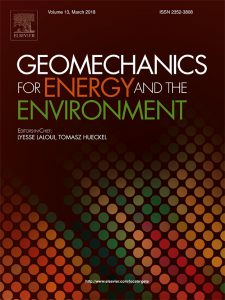6. Multiphysics Degradation Processes, and Their Mitigation in Energy Geomechanics
Lecturer
Content
It is widely accepted that critical properties of geo-materials that play a key role in failure of earth-structures undergo often a substantial evolution induced by mechanical and non-mechanical processes and variables. That is especially important in energy installations because, first, they are planned for a long life time of service, and second because of the ensuing long-term exposure to the “environmental” variables as temperature, chemical (internal and external fluxes), phase change (evaporation/condensation, melting/solidification). Such variables may induce/produce processes, such as: hydro-thermal fracture, thermal collapse, chemical mass (long-term) removal or accretion (dissolution or precipitation) weakening/strengthening, chemical shrinkage/swelling, drying shrinkage, capillary force evolution during pore water phase change, oftentimes. The engineering properties affected are: strength in all its manifestation, compressibility, permeability, thermal conductivity, to mention just a few.
There is a growing social expectation to provide infrastructure that would be resilient in the circumstances, not only of the routine loading, but also exceptional loading, including extreme and accidental exposure. This expectation seems to derive from less than satisfactory performance of the infrastructure, urban systems, as well as individual structures during recent hurricanes Katrina, and Sandy, repeated flooding across EU and US, including the coastal flooding, the tsunami disaster in Fukushima, the overall deterioration of roads and bridges in the US, the inundation of cities due to rise in sea level.
With the new energy technologies entering the practice, or being studied, like CO2 sequestration, fracking, methane hydrate exploitation, nuclear waste disposal, geo-thermal energy, etc, this leads to the expectation, that they be designed as resilient, which implies that as many as possible scenarios of loading of lesser probability of occurrence be examined, and long-term performance analyses be conducted.
One of a most common misconceptions in structural mechanics and geo-mechanics is to perform failure analysis assuming that the properties of the materials involved are those of a “nominal“ material, i.e. a material as it was at the moment of its manufacturing, or of the moment of placement of the structure into the soil mass. The currently accepted practice required by laws, standards and codes, and philosophy of legislation supporting them to deal with such processes are limited exclusively to the concept of factor of safety, which is a single number, to reduce the allowable load.
Instead, we advocate for a different engineering paradigm. This consists of a mechanical analysis for an ultimate mechanical load, to rely on Performance Assessment (PA). Performance Assessment is a critical evaluation of functioning and safety margin under a series of scenarios of long-term exposure (often cyclic) to a number of environmental processes of all sorts either acting in series or in parallel in time. It strongly relies on numerical simulations and the capability to model their effect on material properties. The physical processes involved are either natural or engineered, but very often either poorly controlled, or not controlled at all. Their phenomenology is per se a conundrum, as often they constitute a series of parallel or sequential processes.
The lecture focuses on a series of phenomena of geomaterial degradation (short and long term) and methods to deal with multi-physical couplings in constitutive modeling via thermo- and chemo- -plasticity and -elasticity, emphasizing their multi-scale description. Other degradation phenomena discussed include drying –cracking, and or the role of suction induced hardening in unsaturated materials. The very meaning of degradation implies a gradual loss of engineering qualities, and we will leave aside similar, interesting that are out of scope of this specific definition. In plasticity, the central constitutive function in which we will place degradation-related variables is a hardening rule. The improving knowledge of long-term mechanisms of failure results in better informed strategies of mitigation of the degradation processes.



